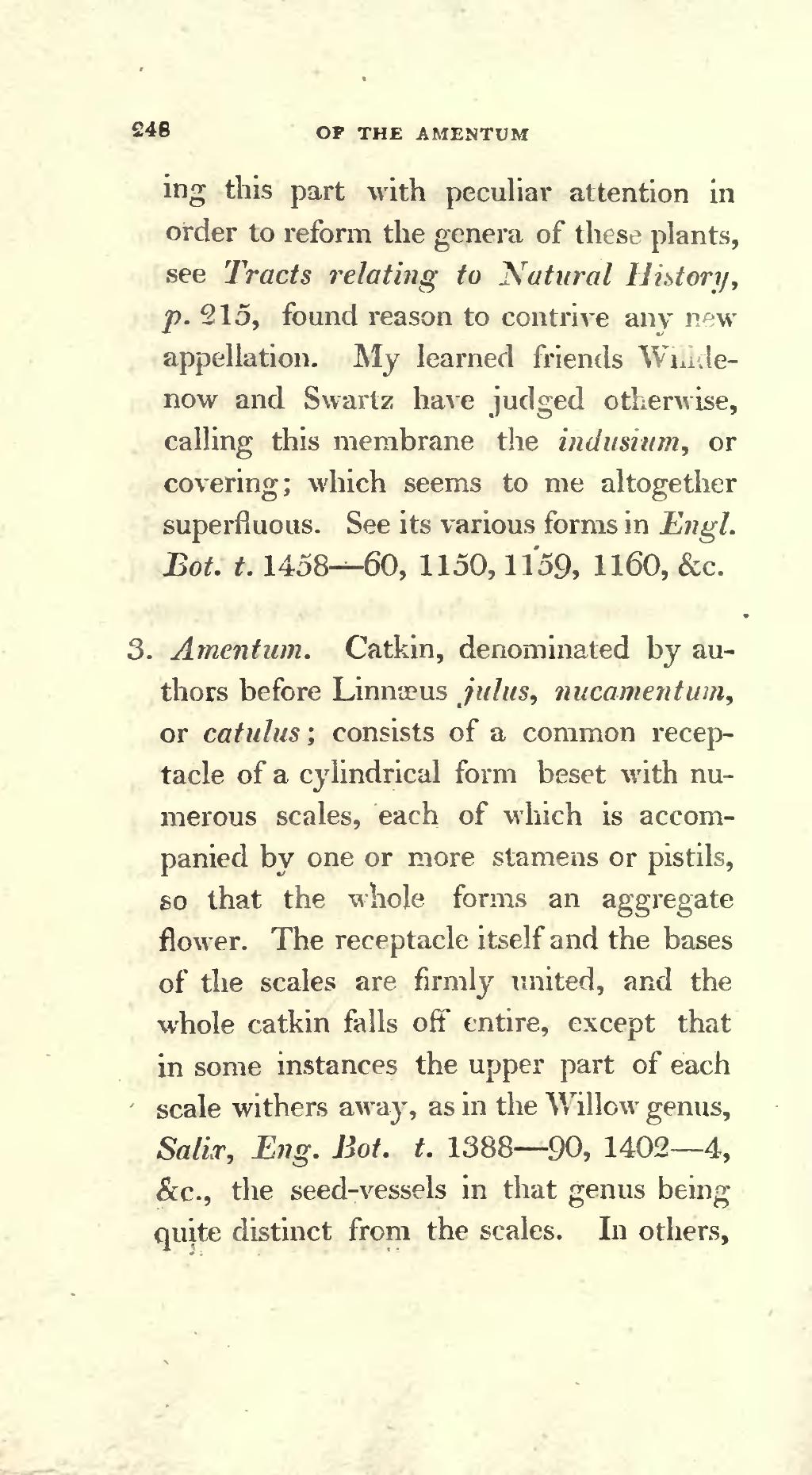ing this part with peculiar attention in order to reform the genera of these plants, see Tracts relating to Natural History p. 215, found reason to contrive any new appelation. My learned friends Willdenow and Swartz have judged otherwise, calling this membrane the indusium, or covering; which seems to me altogether superfluous. See its various forms in Engl. Bot. t. 1458–t. 60, t. 1150, t. 1159, t. 1160, &c.
3. Amentum. Catkin, denominated by authors before Linnæus julus, nucamentum, or catulus; consists of a common receptacle of a cylindrical form beset with numerous scales, each of which is accompanied by one or more stamens or pistils, so that the whole forms an aggregate flower. The receptacle itself and the bases of the scales are firmly united, and the whole catkin falls off entire, except that in some instances the upper part of each scale withers away, as in the Willow genus, Salix, Eng. Bot. t. 1388–90, 1402–4, &c., the seed-vessels in that genus being quite distinct from the scales. In others,

